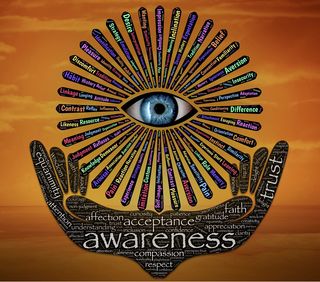Relationships
5 Steps to Rediscovering You
Building STEAM to Find Your True Self and Fulfillment
Posted January 23, 2018

If you feel lost and lack a sense of fulfillment, chances are that you are essentially feeling like a victim of the forces in your life. You can change this by getting to know yourself better. This will strengthen your connection with your “true self,” which will help you to feel a greater your sense of inner well-being and offer direction for how to find a personal fulfillment.
You can expand and deepen your self-awareness by focusing on five domains of awareness (STEAM) and asking yourself a question to explore each domain: Sensations, Thoughts, Emotions, Actions, and Mentalizing (explained below).
Sensations: What do you sense in your body?
Being connected with your “true self” involves being connected with your physical self. So, people who feel disconnected from their inner selves are sometimes also disconnected from their bodily experiences.
To reconnect, it is essential that you can observe and experience the sensations in your body – such as churning in your stomach, tightness in your chest, or tears welling in your eyes. As you learn to attend to your body, you may also notice that it opens you to greater awareness of other inner experiences, especially your emotions.
Thoughts: What are your thoughts?
People think all the time. Their thoughts can seem to have a life of their own, flowing through their mind in ways that are often rambling, conflicting, and sometimes not particularly coherent. And they can get lost in all the activity when they don’t reflect on their thoughts, appraising which ones they believe, question, or even want to pursue. The result is that they can end up unsure of what they think or who they are.
Instead, you can connect with your true self by reflecting on your thoughts. In doing this, you become an observer, who may or may not agree with them. So, when having conflicting thoughts about your creative ability, you might see this and think, “I vacillate between thinking I have real potential and thinking I am a terrible artist.” With these observations, you might realize that part of you believes the criticism while another part of you thinks it is unrealistically harsh.
Reflecting on your thoughts allows you to identify which ones resonate as expressing your “true self,” even when they are conflicting, confusing, or in any way not fully understood. In addition, when you pursue the ones that you connect with, you will be on the path to fulfillment.
Emotions: What are you feeling?
People often have many emotions at the same time, just as they do with thoughts. Some of those emotions will conflict, such as when you have bittersweet memories of playing with an uncle who sadly died last year. You may also find that when you pause to experience an emotion, another emotion emerges. For instance, anger is often a defensive response to feeling hurt, betrayed, or disrespected. The more fully you can acknowledge, accept, tolerate, and befriend your emotions, the more you can allow yourself to experience them – rather than defend against them. You can then be more open to experiencing them as true expressions of your inner experience.
This journey takes time, courage, and faith that you will be stronger for the experience. But you can begin it by simply asking yourself what you are feeling and then remaining open to the answer.
Actions: What are your actions and re-actions?
Notice how your actions affect your thoughts and feelings. For instance, you might realize that by facing your fear of asking your boss for a raise, you realize you can be more assertive than you thought you could be. You might also realize that your “true self” can be more courageous and assertive than you previously thought.
In addition, it is important to notice your reactions to positive circumstances. If you want to feel fulfilled in this life, it’s essential to recognize those actions that make you feel fulfilled and that you pursue them.
Mentalizing: Do you really “get” what’s going on in you and others?
Mentalizing is a psychological term that means understanding in your mind and connecting in your heart with what is motivating yourself or someone else. It’s as simple as knowing someone is really listening to you because you see them nodding and maintaining eye contact as you talk. Similarly, you are mentalizing yourself when you realize that you responded to a friend sarcastically because you have been angry about something he previously said to you. (If you want to learn more about mentalizing, check out: Emotional Struggles: One Concept Explains a Lot and Feeling Stuck, Lost, or Overwhelmed? There is Hope)
Strengthening your ability to mentalize yourself and others is essential in discovering your “true self” because it helps you to understand and connect with what you are truly experiencing.
The simple truth is that the more STEAM you gain, the more connected you feel to your “true self.” Also, by empathizing with your “true self,” you are more likely to express its interests and values, which will lead to a more fulfilling life.
If you would like to learn more about this topic, check out this brief video:
Leslie Becker-Phelps, Ph.D. is a clinical psychologist in private practice and is on the medical staff at Robert Wood Johnson University Hospital, Somerset in Somerville, NJ. She is also a regular contributor for the WebMD blog Relationships and is the relationship expert on WebMD’s Relationships Message Board.
Dr. Becker-Phelps is also the author of Insecure in Love and consultant psychologist for Love: The Art of Attraction.
If you would like email notification of new blog postings by Dr. Becker-Phelps, click here.
Making Change blog posts are for general educational purposes only. They may or may not be relevant for your particular situation; and they should not be relied upon as a substitute for professional assistance.
Personal change through compassionate self-awareness




